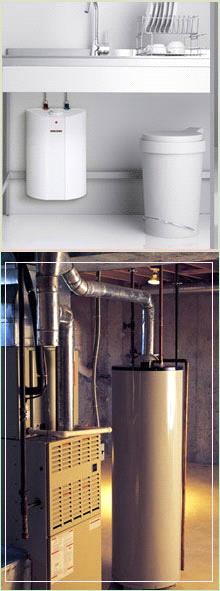What Is A Water Heating System

What Is A Water Heating System
Have you ever wondered where your supply of hot water comes from? People usually dont even care to look until the supply actually stops. And if it stops when you're in the shower, this realization can arrive quite abruptly. Fortunately, it doesn't happen that often. The unit which is responsible for providing hot water to your house/business does not usually have issues for years. But when the hitch comes, some background can help. Even if you can't make the repairs yourself, you'll have a good idea what to tell the doctor when he arrives.
First and foremost, you need to understand the supplier of your hot water is a hot water heater which is installed somewhere in your house/office. The water coming into your home makes a journey through a system of pipes, and it's usually cold or cool, depending on the time of year.
Hot water heaters are a common fixture in most of the homes. Typically, they look like a huge metal cylinder drum that are often in the basement or near your laundry room. The never technoligcal advancement have make them a little bit more interesting. Nowadays, water heaters are losing the tank completely in an effort to provide water-on-demand. This new units are so compact compared to the old school tank water heaters, that you can even install a tankless water heater right underneath your sink and no one would ever notice. On the other hand, you may have heard the terms, old is gold. This is completely true when you have a debate about storage tank water heater or tankless water heater. Each have their pros and cons. The old, reliable water heater design that's most widely used in the U.S. today is really a pretty simple appliance; it's basically a drum filled with water and equipped with a heating mechanism on the bottom or inside. Even though they lack drama and complexity, water heaters are still pretty amazing. What makes them interesting is that they exploit the heat rising principle to deliver hot water right to your faucet with a minimum of fuss. Don't let the simple shape shrouded in its wooly insulating blanket fool you. Water heaters have an ingenious design on the inside for something that looks so ordinary on the outside.
Lets talk about whats inside a water heater as without understanding whats underneath, you will never know whats outside.
Its time to have a look at the components that work so hard together in order to provide hot water for your morning showers.
Tank - The inside shell of a hot water heater is a very heavy metal tank containing a line of water protective that would be able to hold hot water, in the gallon capacity it is rated to do. Hence based on the water, it would weight something around 50 to 100 pounds per square in, which is the pressure of a typical residential hot water heater. The exterior of the tank is covered in an insulating material like polyurethane foam. Over that, there's a decorative outer shell and possibly an additional insulating blanket
Dip tube - Water enters the water heater through the dip tube at the top of the tank and travels to the tank bottom where it's then heated.
Thermostat - This is a thermometer- and temperature-control device. Some electric water heaters have a separate thermostat for each element.
Shut-off valve -The shut-off valve stops water flow into the water heater. It's a separate component from the heater located outside and above the unit.
Drain valve - Located near the bottom of the exterior housing, the drain valve makes it easy to empty the tank to replace the elements, remove sediment or move the tank to another location.
Pressure relief valve - This safety device keeps the pressure inside the water heater within safe limits.
Heat-out pipe -Suspended toward the top of the tank's interior, the heat-out pipe allows the hot water to exit the water heater.
Heating mechanism - Electric water heaters have heating elements inside the tank to heat the water. Gas water heaters use a burner and chimney system instead.
Sacrificial anode rod - Made of magnesium or aluminum with a steel core, the sacrificial anode rod is suspended in the water heater tank to help retard corrosion.

![]()
![]()
![]()